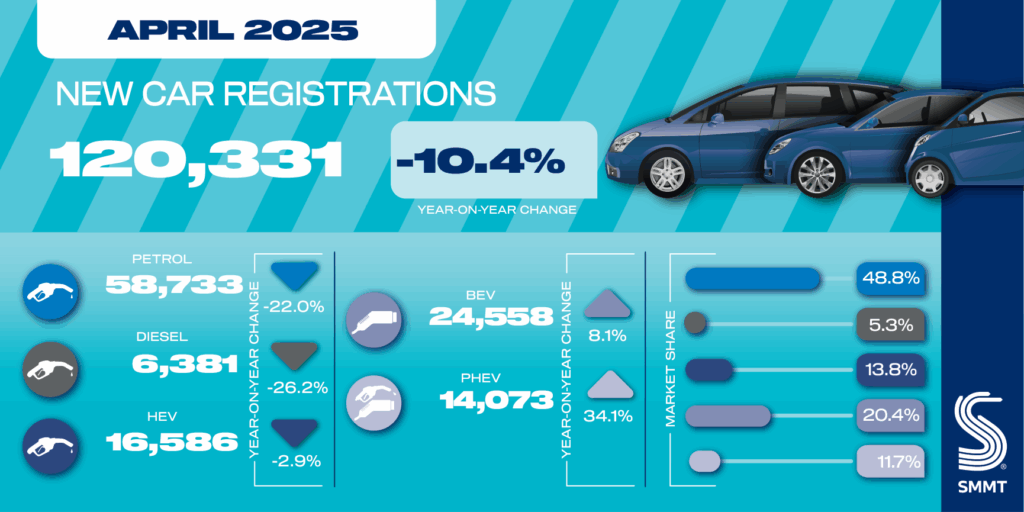AI-Driven Dynamic Pricing Strategies in Mobile Commerce Apps
By leveraging AI’s power to analyze vast amounts of data and adjust prices in real-time, businesses can maximize revenue, offer personalized deals, and stay ahead of the competition.

We’ve all seen the rise of mobile commerce apps, where the convenience of shopping is just a tap away. From clothing to groceries, electronics to beauty products, the mobile shopping experience has quickly become a central part of our daily lives. But there’s one aspect of mobile commerce that’s undergone a dramatic shift in recent years: pricing.
Gone are the days of static prices that never change. Today, mobile apps are embracing a more sophisticated and flexible approach to pricing—thanks to artificial intelligence (AI). Through AI-driven dynamic pricing strategies, mobile commerce apps are transforming how products are priced and, ultimately, how consumers engage with them.
In this blog, we’ll explore how AI is revolutionizing pricing strategies within mobile commerce apps and why dynamic pricing could be the key to unlocking greater sales and user satisfaction. We’ll dive into what dynamic pricing is, how AI powers it, and the benefits and challenges that come with implementing it.
What is Dynamic Pricing?
Dynamic pricing, also known as demand pricing or surge pricing, is a pricing strategy where the price of a product or service is flexible and changes based on certain factors, such as demand, time, user behavior, competition, and market conditions. Unlike traditional pricing models where prices are fixed, dynamic pricing allows businesses to adjust their prices in real-time to maximize profit and improve customer satisfaction.
In the world of mobile commerce, dynamic pricing is a game-changer. It enables apps to adjust the cost of goods and services based on specific variables, ensuring that the pricing is always competitive and tailored to the user’s needs. For example, an e-commerce app might lower the price of a popular product during off-peak hours or increase the price when demand is higher. Dynamic pricing not only helps businesses optimize revenue, but it also ensures that customers are getting the best deal possible—without requiring them to spend time comparing prices elsewhere.
But what makes dynamic pricing even more powerful in the context of mobile apps? The answer lies in AI.
The Role of AI in Dynamic Pricing
Artificial Intelligence is the backbone of modern dynamic pricing strategies. Thanks to machine learning (ML), predictive analytics, and big data processing, AI allows mobile apps to make intelligent pricing decisions based on real-time data. Unlike manual pricing strategies that rely on human judgment, AI-driven pricing strategies can process vast amounts of data in seconds and adjust prices on the fly.
1. Data Collection and Analysis
AI systems collect data from a variety of sources—user behavior, purchasing patterns, competitor prices, market trends, and more. This data is analyzed to identify patterns and predict future behavior. For example, AI can track how users interact with a product, what time of day they’re most likely to buy, and how often they abandon their shopping carts.
With this wealth of information, AI can identify pricing opportunities. If a product has a higher-than-usual demand, AI can increase the price accordingly. On the other hand, if a product is languishing in a user’s cart without being purchased, AI might reduce the price to encourage a sale.
2. Predictive Analytics
Predictive analytics is another powerful tool that AI uses to inform dynamic pricing. By analyzing historical data and user behavior, AI can predict future demand for a product and adjust pricing accordingly. For example, if an app notices that certain products tend to sell out during a specific time of the year, AI can raise prices in anticipation of increased demand.
This predictive capability allows businesses to stay ahead of the curve, ensuring that they don’t miss out on potential revenue. It also ensures that customers aren’t left feeling like they paid too much or too little for a product.
3. Real-Time Price Adjustments
One of the most powerful aspects of AI in dynamic pricing is its ability to make real-time adjustments to prices. AI systems can monitor live market data and user interactions and adjust prices instantly based on changing conditions. This could mean adjusting prices during flash sales, responding to competitor price changes, or even offering discounts to users who show signs of hesitancy.
These real-time adjustments allow mobile apps to be more responsive to user needs, ensuring that customers feel like they’re getting the best deal at any given moment.
The Benefits of AI-Driven Dynamic Pricing
1. Maximizing Revenue
Dynamic pricing allows businesses to maximize revenue by adjusting prices based on demand and supply. During periods of high demand, prices can be increased to capitalize on the surge in interest. Conversely, during off-peak times, businesses can lower prices to attract more buyers. By optimizing pricing in this way, businesses can ensure they’re making the most out of every sale.
For instance, a travel app might use AI to adjust hotel prices based on the time of day, the season, and the number of available rooms. By doing so, the app can increase prices during peak travel seasons while offering competitive prices during less busy times.
2. Improved Customer Experience
With dynamic pricing powered by AI, businesses can offer customers more personalized and relevant pricing. If the app knows that a user has been browsing a particular product for some time, it may offer a discount to encourage the purchase. Alternatively, AI can identify loyal customers and offer them special pricing or perks based on their shopping behavior.
This level of personalization not only enhances the customer experience but also builds brand loyalty. Customers are more likely to return to an app that offers tailored pricing and rewards.
3. Competitive Edge
In a crowded mobile commerce space, businesses are constantly looking for ways to stay ahead of the competition. AI-driven dynamic pricing provides a significant competitive advantage. By using real-time data and adjusting prices based on market conditions, businesses can ensure they’re offering the most attractive prices at any given moment.
AI also allows businesses to monitor competitors' pricing strategies in real-time, enabling them to respond to price changes faster than ever before. This agility can be a game-changer for businesses trying to outperform competitors in the mobile commerce space.
4. Increased Conversion Rates
One of the biggest advantages of AI-driven dynamic pricing is its ability to increase conversion rates. By offering competitive prices based on real-time data, apps can increase the likelihood that users will complete a purchase. For example, if a user hesitates to buy a product, dynamic pricing can offer a discount or better deal to encourage them to complete the transaction.
Additionally, AI can automatically detect when a product is priced too high compared to competitors and reduce the price accordingly to ensure the app stays competitive in the marketplace.
Challenges and Considerations of Dynamic Pricing
While AI-driven dynamic pricing offers numerous benefits, it’s not without its challenges. Here are a few considerations for mobile app developers and businesses looking to implement dynamic pricing:
1. Price Sensitivity
Consumers are becoming increasingly savvy and price-conscious. If they perceive that prices are fluctuating too much or that they are being charged unfairly, they may become frustrated and stop using the app altogether. It’s crucial to strike a balance between offering competitive prices and ensuring that customers feel like they’re getting a fair deal.
2. Ethical Implications
There’s an ethical side to dynamic pricing, especially when it comes to price discrimination. AI could potentially identify users based on their location, income, or browsing behavior and charge them different prices for the same product. This could lead to negative publicity or user backlash if consumers feel they’re being taken advantage of.
To mitigate these concerns, businesses must be transparent about their pricing practices and ensure they’re not engaging in unfair pricing tactics.
3. Technical Complexity
Implementing AI-driven dynamic pricing requires sophisticated algorithms, data analysis, and technical infrastructure. Businesses must ensure they have the right data analytics tools and machine learning models in place to support dynamic pricing. Additionally, AI systems need to be constantly updated and monitored to ensure that they’re making accurate pricing decisions.
Real-World Examples of AI-Driven Dynamic Pricing
Several companies are already using AI to power their dynamic pricing strategies. Here are a few examples:
1. Uber
Uber’s surge pricing is a textbook example of dynamic pricing in action. Using AI algorithms, Uber adjusts fares based on real-time demand and supply. When demand is high, such as during rush hour or in bad weather, Uber increases prices to encourage more drivers to get on the road. Conversely, when demand is low, prices drop to attract riders.
2. Amazon
Amazon uses AI to adjust prices dynamically based on market conditions, competitor prices, and user behavior. By monitoring competitor listings and tracking purchasing patterns, Amazon can adjust prices in real-time to ensure they stay competitive.
3. Airlines and Hotels
Airline companies and hotel chains use AI-driven dynamic pricing to adjust ticket and room rates based on factors like demand, time of booking, and seasonality. For example, flights are often more expensive closer to the date of departure, and hotel rooms can vary in price depending on availability and local events.
Conclusion: Embracing AI for Smarter Pricing
As mobile commerce continues to evolve, AI-driven dynamic pricing is becoming a crucial tool for businesses looking to stay competitive and improve customer experience. By leveraging AI’s power to analyze vast amounts of data and adjust prices in real-time, businesses can maximize revenue, offer personalized deals, and stay ahead of the competition. However, implementing dynamic pricing comes with its challenges, including ethical considerations and the need for sophisticated technical infrastructure.
For businesses looking to take their mobile commerce apps to the next level, partnering with an experienced mobile app development company can help you navigate the complexities of AI-driven pricing strategies and ensure your app is equipped for success.





















































































